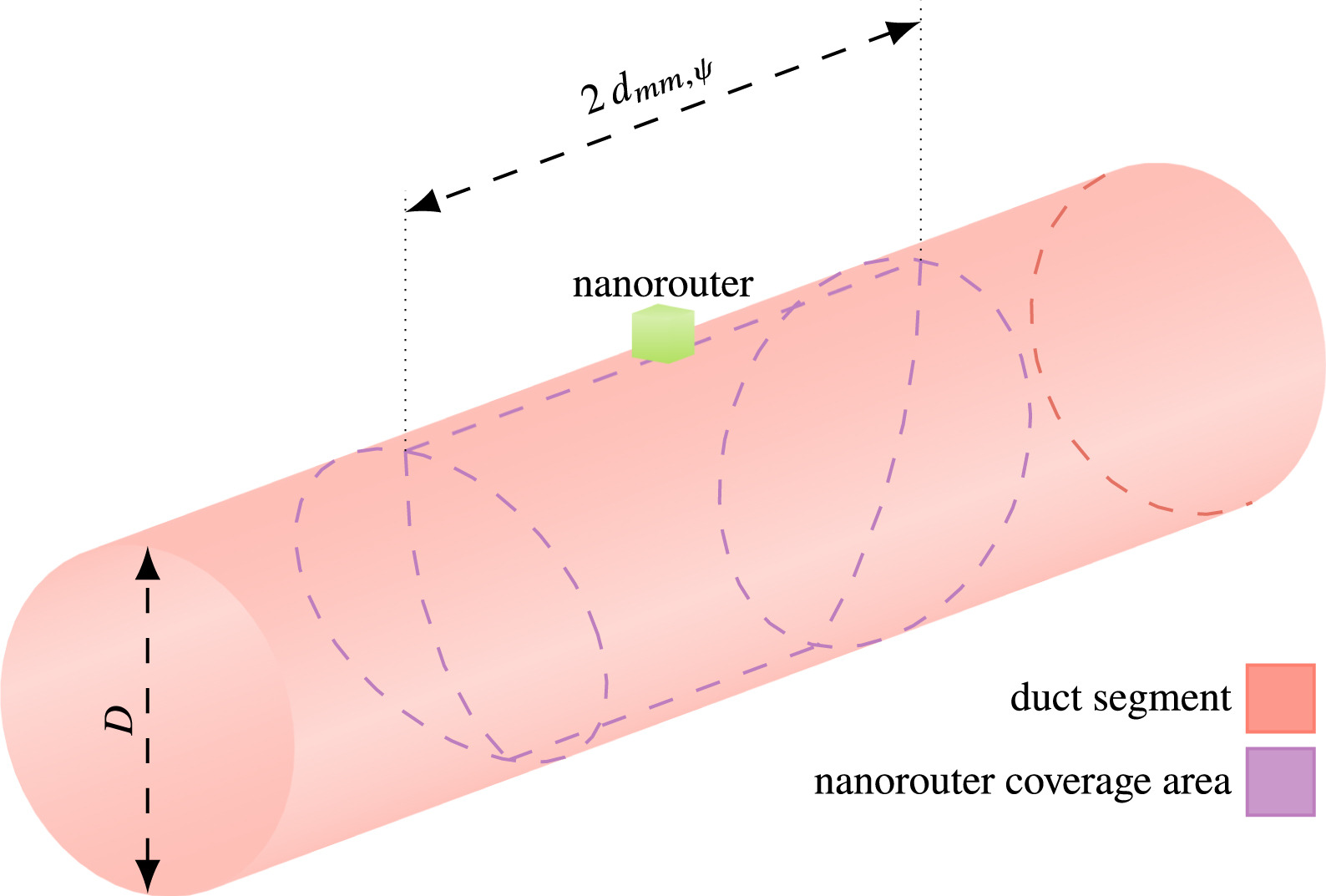Destacado
Transmission power allocation in flow-guided nanocommunication networks
Flow-guided electromagnetic nanonetworks hold tremendous potential for transformative medical applications, enabling monitoring, information gathering, and data transmission within the human body. Operating in challenging environments with stringent computational and power constraints within human vascular systems, these nanonetworks face significant hurdles. Successful transmissions between in-body nanonodes and on-body nanorouters are infrequent, requiring novel approaches to enhance network throughput under such circumstances. Traditional flow-guided nanonetworks rely on nanonodes to transmit packets if they possess sufficient energy, irrespective of their proximity to the nanorouter. In this paper, we present an extended model for legacy flow-guided nanonetworks that offers substantial throughput improvements while reducing the required number of nanonodes compared to the baseline blind transmission approach. By allocating transmission energy to allow more than one transmission during a charging cycle, our proposed model significantly enhances network throughput, facilitating the deployment of nanocommunication-supported medical applications. For example, with only two transmissions, it is possible to increase throughput by around 46% with the same number of nanonodes or, equivalently, reduce the number of nanonodes by the same amount to achieve the same throughput.
Autores
Rafael Asorey-Cacheda∗, Laura Garcia, Antonio-Javier Garcia-Sanchez, Joan Garcia-Haro
Revista
Internet of Things

Publicado
20 de febrero de 2024

